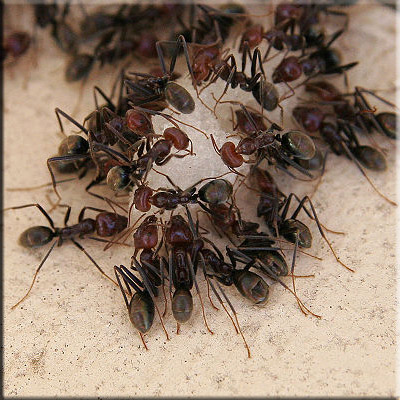 |
|||||
| Desert ants smell their way home | |||||
Feb 26, 2009
Humans lost in the desert are well known for going around in circles, prompting scientists to ask how desert creatures find their way around without landmarks for guidance. Now research published in BioMed Central's open access journal Frontiers in Zoology shows that Desert Ants input both local smells and visual cues into their navigation systems to guide them home. Until now researchers thought that the Desert Ant Cataglyphis fortis, which makes its home in the inhospitable salt pans of Tunisia, was a pure vision-guided insect. But Kathrin Steck, Bill Hansson and Markus Knaden from the Max Planck Institute for Chemical Ecology in Jena, Germany used gas chromatography to verify that desert microhabitats do have unique odour signatures that can guide the ants back to the nest. After having identified some odours of these signatures the researchers trained ants in field experiments to recognise these odours pointing to a hidden nest entrance. Ants learned to associate their nest entrance with a single odour and discriminated the training odour against non-training odours. They even picked out the training odour from a four-odour blend. The ants were less focused when faced with a blend rather than the pure scent of home, but still performed better in their search than those tested with the solvent control. The use of environmentally derived olfactory landmarks has been shown for pigeons, while most ants rely rather on self generated pheromone trails. However Cataglyphis roams for over 100 meters in search for food in a habitat where high temperatures and changeable food locations make pheromone trails ineffective. This might be the reason, why these ants better go for stable olfactory landmarks that they learn at the nest entrance. "We are amazed to discover that while keeping track of the path integrator and learning visual landmarks, these ants can also collect information about the olfactory world," said Knaden, who hopes to investigate the interaction between visual and olfactory information in future research. Adapted from materials provided by BioMed Central via EurekAlert!, a service of AAAS |
|||||
